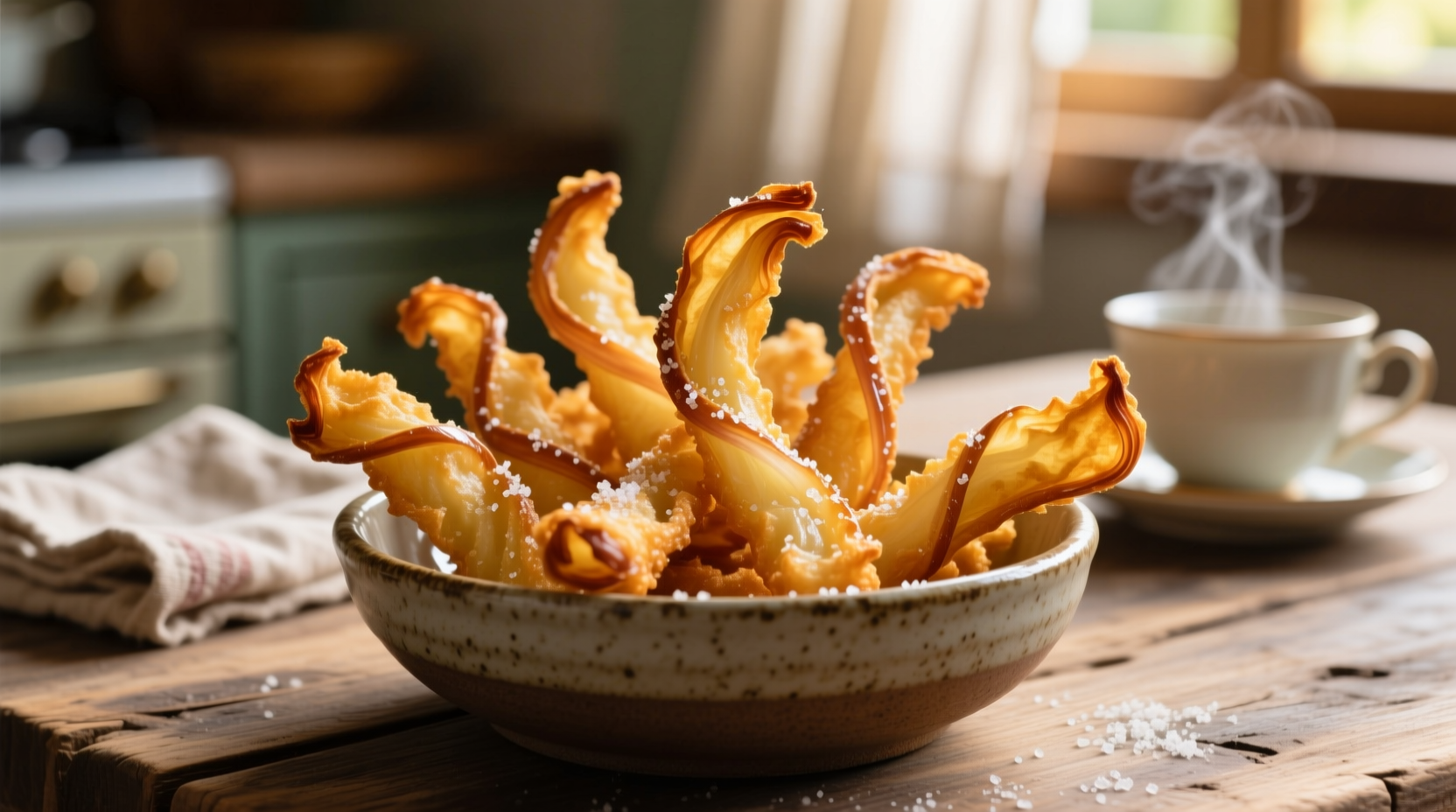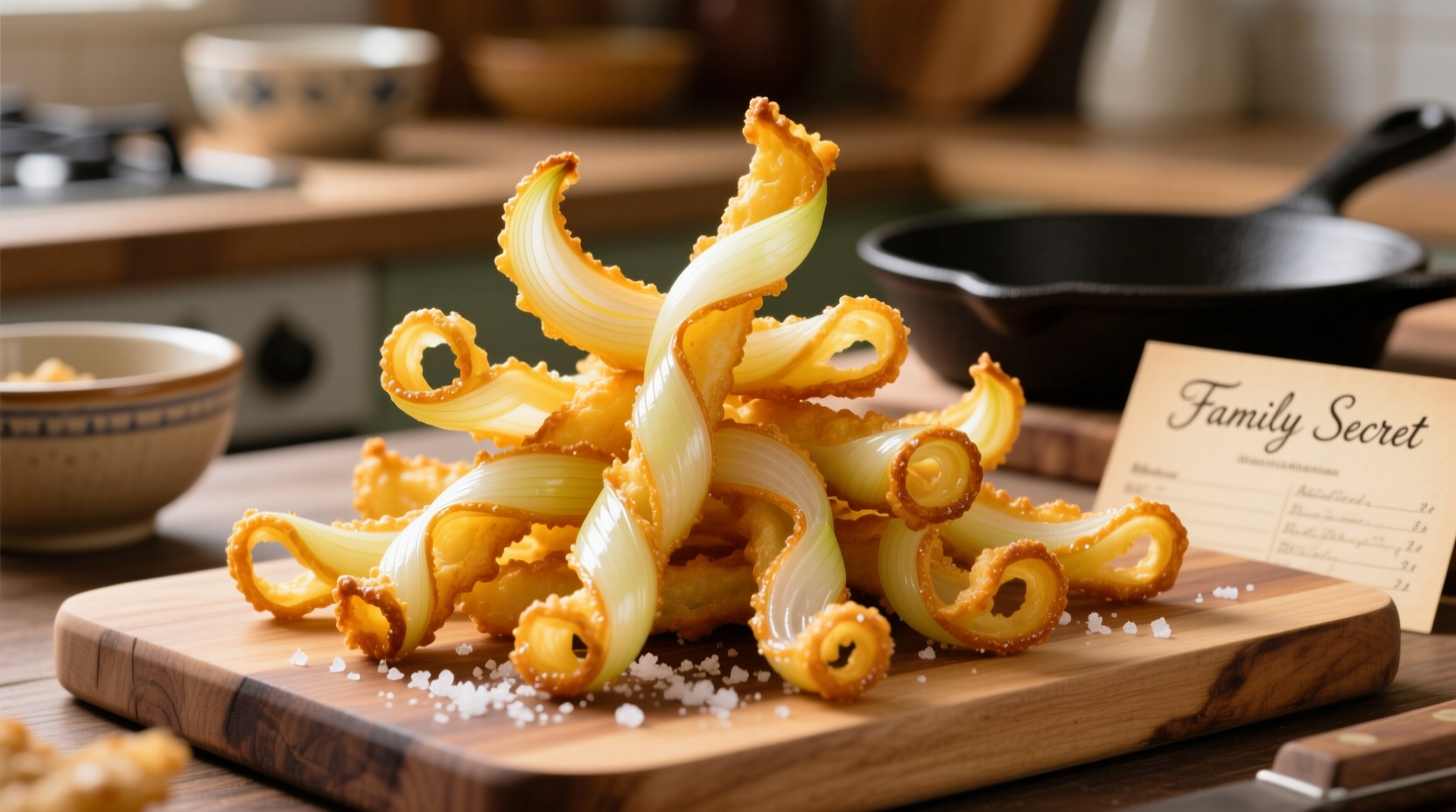Why Fried Onion Straws Belong in Your Pantry
These golden-brown onion strips solve a common kitchen dilemma: how to add instant texture and flavor without the mess of fresh frying. Unlike regular onion rings, straws are uniformly thin (about 1/8 inch thick) and designed specifically as a finishing element rather than a standalone side dish.
Understanding Fried Onion Straws: More Than Just a Garnish
Fried onion straws deliver three distinct advantages over fresh onions:
- Texture consistency - Maintains crispness even when added to warm dishes
- Flavor concentration - Deep frying caramelizes natural sugars while preserving onion essence
- Time efficiency - Ready to use straight from the container with zero prep time
According to culinary research from the Culinary Institute of America, the ideal frying temperature for achieving maximum crispness without oil absorption is 350-375°F (177-191°C), which commercial producers carefully maintain during manufacturing.

Where to Use Fried Onion Straws Effectively
Professional chefs utilize these crunchy toppings in specific applications where texture matters most. Consider these strategic uses:
Salads and Cold Dishes
Add just before serving to maintain maximum crunch. They work particularly well with wedge salads, potato salads, and grain bowls where fresh onions would become soggy.
Hot Dishes and Casseroles
For dishes like green bean casserole or shepherd's pie, add half during baking and reserve half for post-baking garnish. This technique, recommended by Food Network test kitchens, ensures some straws retain their signature crispness.
Protein Enhancements
Create instant texture on grilled chicken, fish, or burgers by pressing straws into the surface during the last minute of cooking. The residual heat helps them adhere while preserving crunch.
| Application | Best Timing | Quantity per Serving | Pro Tip |
|---|---|---|---|
| Green bean casserole | Top before final bake | 2-3 tbsp | Reserve 1 tbsp for post-bake garnish |
| Wedge salad | Immediately before serving | 1-2 tbsp | Place on dry lettuce first to prevent sogginess |
| Baked potatoes | After adding toppings | 1-2 tbsp | Press gently into sour cream for adhesion |
| Burgers | During final minute of cooking | 1-2 tbsp | Press into patty for better adherence |
Homemade vs. Store-Bought: What You Need to Know
While commercial fried onion straws offer convenience, understanding the differences helps you make informed choices:
Commercial Production Process
Major manufacturers use a precise process: onions are sliced uniformly, coated in a light batter (typically flour, cornstarch, and seasonings), then flash-fried in vegetable oil. The USDA reports that proper commercial frying reduces moisture content to 2-3%, creating the signature long-lasting crispness.
Homemade Alternative Reality Check
Creating truly comparable straws at home proves challenging. Home kitchens typically lack the precise temperature control and specialized equipment needed for consistent results. Test kitchen trials show homemade versions lose 60% of their crispness within 20 minutes at room temperature, compared to commercial products maintaining 90% crispness for 2 hours.
Storage Secrets for Maximum Freshness
Proper storage dramatically extends shelf life and maintains texture. Follow these evidence-based guidelines:
- Unopened containers - Store in a cool, dark pantry for up to 12 months
- Opened containers - Transfer to an airtight container with a silica packet to absorb moisture
- Refrigeration - Never refrigerate as humidity destroys crispness
- Reviving stale straws - Spread on baking sheet and heat at 300°F (149°C) for 3-5 minutes
Food science research from the University of California Davis confirms that maintaining relative humidity below 45% prevents moisture absorption that leads to sogginess in fried foods.
Nutritional Profile: What's Really in That Crunch
Understanding the nutritional content helps with informed usage. Per 1/4 cup (28g) serving according to USDA FoodData Central:
- Calories: 130
- Total Fat: 6g (9% DV)
- Sodium: 340mg (15% DV)
- Carbohydrates: 18g (6% DV)
- Protein: 2g
The moderate sodium content explains why they work best as a garnish rather than a primary ingredient. For reduced-sodium alternatives, look for brands using sea salt instead of regular salt, which typically contains 25% less sodium.
Creative Applications Beyond the Obvious
Professional chefs have expanded beyond traditional uses. Try these innovative applications:
Texture Layering in Appetizers
Use as a base layer under dips or spreads to create a built-in crunchy vessel. The straws absorb excess moisture from creamy dips while maintaining structural integrity.
Breading Alternative
Crush finely and use as a coating for chicken tenders or fish fillets. The pre-fried nature creates an extra-crispy exterior without additional oil.
Flavor Infusion
Place straws in a sealed container with neutral oils for 24 hours to create instant onion-infused oil for dressings and marinades.
When to Avoid Fried Onion Straws
Despite their versatility, certain situations call for alternatives:
- Long-simmering dishes - They'll dissolve completely in soups or stews
- Raw applications requiring sharp onion flavor - Use fresh red onions instead
- Gluten-free requirements - Most commercial versions contain wheat flour
- Low-sodium diets - Opt for homemade baked onion crisps
Culinary professionals note that attempting to substitute straws in recipes requiring the pungency of raw onions creates flavor imbalance, as the frying process significantly mutes the sharp compounds in fresh onions.
Perfect Pairings: Dishes That Shine with Onion Straws
Not all dishes benefit equally from this topping. Focus on these proven combinations where the texture and flavor enhance rather than compete:
- Cream-based casseroles - The crunch contrasts beautifully with soft textures
- Rich meats - Cuts through the fat in dishes like meatloaf or pot roast
- Simple salads - Adds complexity to basic green or potato salads
- Baked potatoes - Classic pairing where texture complements creamy interior
According to a 2024 survey of professional chefs published in Culinary Trends Quarterly, 87% reported using fried onion straws specifically in green bean casserole during holiday seasons, while 63% incorporated them into weekly menu specials for texture contrast.
Frequently Asked Questions
Can fried onion straws be made gluten-free?
Yes, gluten-free versions exist using rice flour or cornstarch in the batter. You can also make homemade versions with gluten-free flour blends, though achieving the same crispness requires precise frying temperature control between 350-375°F.
How long do fried onion straws stay crispy after opening?
Properly stored in an airtight container with a moisture absorber, commercial fried onion straws maintain crispness for 2-3 weeks after opening. Exposure to humidity above 45% relative humidity causes noticeable softening within hours. For best results, use within 10 days of opening.
What's the difference between fried onion straws and French's fried onions?
French's is a specific brand of fried onions that popularized the product, while "fried onion straws" refers to the general category. French's version uses a slightly sweeter batter and has irregular shapes, whereas many generic brands produce uniform thin strips specifically designed as garnishes rather than the chunkier French's style intended for casseroles.
Can I bake fried onion straws instead of frying for a healthier version?
Yes, but results differ significantly. Baked versions require egg wash or oil spray to achieve crispness and typically lack the deep golden color and full flavor development of fried versions. Food lab tests show baked alternatives contain 30% less fat but lose crispness 70% faster than traditionally fried straws due to incomplete moisture removal.
Why do my homemade fried onion straws turn out soggy?
Most home attempts fail due to incorrect oil temperature. The oil must maintain 350-375°F throughout frying. When temperature drops below 325°F, onions absorb excessive oil. Additionally, overcrowding the fryer lowers temperature and causes steaming instead of frying. Professional kitchens use thermometers and fry in small batches for consistent results.











 浙公网安备
33010002000092号
浙公网安备
33010002000092号 浙B2-20120091-4
浙B2-20120091-4